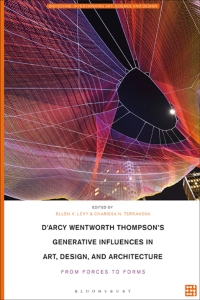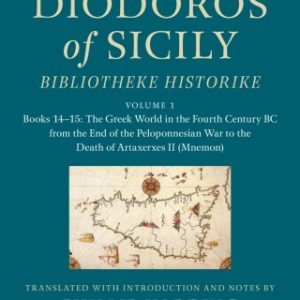Buy D’Arcy Wentworth Thompson’s Generative Influences in Art, Design, and Architecture: From Forces to Forms 1st Edition PDF ebook by author Bloomsbury Visual Arts – published by Bloomsbury Visual Arts in 2021 and save up to 80% compared to the print version of this textbook. With PDF version of this textbook, not only save you money, you can also highlight, add text, underline add post-it notes, bookmarks to pages, instantly search for the major terms or chapter titles, etc.
You can search our site for other versions of the D’Arcy Wentworth Thompson’s Generative Influences in Art, Design, and Architecture: From Forces to Forms 1st Edition PDF ebook. You can also search for others PDF ebooks from publisher Bloomsbury Visual Arts, as well as from your favorite authors. We have thousands of online textbooks and course materials (mostly in PDF) that you can download immediately after purchase.
Note: e-textBooks do not come with access codes, CDs/DVDs, workbooks, and other supplemental items.
eBook Details:
Full title: D’Arcy Wentworth Thompson’s Generative Influences in Art, Design, and Architecture: From Forces to Forms 1st Edition
Edition: 1st
Copyright year: 2021
Publisher: Bloomsbury Visual Arts
Author: Bloomsbury Visual Arts
ISBN: 9781350191112, 9781350191129
Format: PDF
Description of D’Arcy Wentworth Thompson’s Generative Influences in Art, Design, and Architecture: From Forces to Forms 1st Edition:
Scottish zoologist D’Arcy Wentworth Thompson’s visionary ideas in On Growth and Form continue to evolve a century after its publication, aligning it with current developments in art and science. Practitioners, theorists, and historians from art, science, and design reflect on his ongoing influence. Overall, the anthology links evolutionary theory to form generation in both scientific and cultural domains. It offers a close look at the ways cells, organisms, and rules become generative in fields often otherwise disconnected. United by Thompson’s original exploration of how physical forces propel and shape living and nonliving forms, essays range from art, art history, and neuroscience to architecture, design, and biology. Contributors explore how translations are made from the discipline of biology to the cultural arena. They reflect on how Thompson’s study relates to the current sciences of epigenesis, self-organization, biological complex systems, and the expanded evolutionary synthesis. Cross-disciplinary contributors explore the wide-ranging aesthetic ramifications of these sciences. A timeline links the history of evolutionary theory with cultural achievements, providing the reader with a valuable resource.





